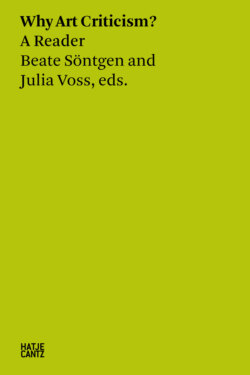Читать книгу Why Art Criticism? A Reader - Группа авторов - Страница 15
ОглавлениеBerta Zuckerkandl
When Berta Zuckerkandl published her article “The Klimt Affair” on April 12, 1905, she brought a journalistic approach into art criticism for which an appropriate label would only arise much later—the leak. Some parts of the correspondence, which she spread over an entire page of the Wiener Allgemeine Zeitung without having received prior authorization, originated from Austria’s Education Ministry. The letter’s addressee—whom Zuckerkandl quoted publicly—was Gustav Klimt, the painter, cofounder of the Vienna Secession, and a friend of the journalist. The conflict raging between Klimt and the Ministry concerned a commission the artist had received more than ten years prior. His task was to create several ceiling paintings for the university’s festival hall, depicting allegories of philosophy, medicine, and jurisprudence. Once completed, however, each of these paintings met with substantial resistance, both among the public and in the university. When the Education Ministry ultimately demanded changes, Klimt resolved to withdraw the paintings and refund all monies that had already been paid to him. The Ministry refused even this offer—until Zuckerkandl made the affair public.
The debate on the “Faculty Paintings” has been well researched, studied, and reappraised. Its lesson for art criticism is the innovative form that Zuckerkandl gave to it: Rather than defending Klimt with incandescent praise, she resorted to a strategy which had up until that point been a part of political journalism’s repertoire. By making public what was meant to remain behind the scenes, she pushed Klimt’s opponents to expose themselves. Klimt bore witness to the readership on the arguments with which the Ministry sought to justify the withdrawal of his paintings. Simultaneously, the public was able to read up on how his return request had been refused. Zuckerkandl presented the original, stilted tone of the language in which Klimt was three times addressed as “Your Honor” (Euer Hochwohlgeboren, literally “your high-born”), with artistic considerations not playing any role. “One forgot,” commented Zuckerkandl dryly, “that it was in fact ultimately about artworks, not something like deliveries of bathing trousers for the municipal baths….”
It is unsurprising that Zuckerkandl was shrewd in terms of political journalism. When she was three years old, her father Moritz Szeps bought a pro-government newspaper in Vienna and lent it a new, liberal-left direction. At seventeen, Zuckerkandl was running political errands, delivering messages her father exchanged with the progressive Crown Prince Rudolf. Upon Rudolf’s death by suicide in 1889, hopes for a better future for the Austrian monarchy had been dashed. From her childhood onward, Zuckerkandl was present in a political system that was hostile to her beliefs. As an art critic, she consequently placed herself alongside those who advocated for change—including Gustav Klimt, Otto Wagner, and Josef Hoffmann. She maintained close contacts with France and held a renowned salon, supported by her husband, anatomist Emil Zuckerkandl. Plans for the Vienna Secession and the Wiener Werkstätten (“Viennese Workshops”) are said to have been forged at the Zuckerkandls’ villa. Zuckerkandl’s articles were shadowed by the sneering comments of Karl Kraus, editor of the newspaper Die Fackel, who opposed almost all the artists she promoted in her writing. Fortunately for us, her judgment prevailed. As a Jew, she was forced to flee in 1938 when the Nazis marched into Vienna. Two years later, she was also forced to leave Paris, once again to incoming German troops. She moved to Algiers to live with her son, who had emigrated there at an early age. She died in October 1945 in Paris.
